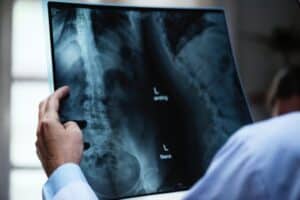Is There Automatically A Financial Recovery Every Time There’s A Baltimore Car Accident?

There are thousands of motor vehicle accidents throughout this country every day. There are hundreds of motor vehicle accidents in Maryland every week. As attorney Eric T. Kirk will tell you these accidents and incidents run the gamut from relatively minor “tappers” / “fender-benders” that don’t leave substantial physical evidence of damage or corresponding injury, to catastrophic accidents, at speed, which damage and destroy vehicles and bodies.
Every successful Baltimore car accident claim has two key components:
The individual seeking compensation must have sustained an objectively verifiable personal injury in the accident.
Secondly- and this is the focus of this article:
The accident must have been caused by the negligence of the other driver and without any negligence on the part of a person seeking recovery or compensation.
Not every one of these occurrences necessarily generates a right to financial compensation for the unfortunate participants. Certainly, any time one’s property- including their car- is damaged through the fault of another person, they are entitled to have that car repaired, or if the damage is significant enough, replaced.

It goes without saying – but perhaps bears repeating here- that there is no such thing as a viable personal injury claim without an objectively verifiable personal injury. In other words, there might have been an accident or a collision between two motor vehicles. This incident might have been caused by the fault the negligence of one of the drivers. If the individual that was not at fault sustained a bodily injury, they may pursue a personal injury claim to recover money damages for their injuries. If, however, that person was not injured, even though they were in an accident, and even though that accident was adjudged the fault of another person, there is no viable personal injury claim. This distinction is one frequently seized upon by the nation’s largest and most powerful insurance companies, and the very successful and skilled attorneys they employ. Here, they argue, aggressively, that if there is not a lot of visible property damage, there cannot be any physical injury to the occupants.
The second component of any successful personal injury claim requires a demonstration of fault. Most commonly, this means that the individual seeking compensation must show that the at-fault driver caused the accident through an act of negligence. This in turn is typically shown by showing the at-fault driver violated a rule of the road or acted in a way that was unreasonable under the circumstance thereby causing the accident. If the plaintiff cannot demonstrate that there was an identifiable act of negligence leading to the injury causing events- the claim will fail. Consider the following scenario. Atmospheric conditions cause a highway to be covered with what is known as black ice.

A sheen of slick, frozen ice covers the roadway, invisible to the naked eye. If cars lose control and slide on that ice striking other vehicles and one or more people are injured, it’s conceivable, and perhaps likely, that a personal injury claim should be brought. The defense in these situations is invariably going to argue that there was no “active negligence.” The personal injury defense lawyer will astutely argue that this was an emergency situation and the defendant in such a case is held to a standard of situationally reasonable conduct, that is in turn dependent on reasonable conduct in the larger context of an emergency situation. If the driver alleged to be at fault successfully demonstrates that he or she had no reason to know of the icy condition and indeed the accident was caused by circumstances beyond his or her control when that vehicle met the icy payment and slid into another vehicle, a defense verdict is possible
The plaintiff will certainly argue that in the above situation the driver of the striking vehicle had an obligation to keep their vehicle under control at all times. A jury, on the other hand, may believe that the emergency situation, i.e. the black ice created circumstances under which the individual who had no reason to anticipate the presence of the ice, nevertheless acted reasonably under the circumstance of an emergency, and therefore there was no negligence. If there is no negligence there can be no recovery for a motor vehicle accident.



